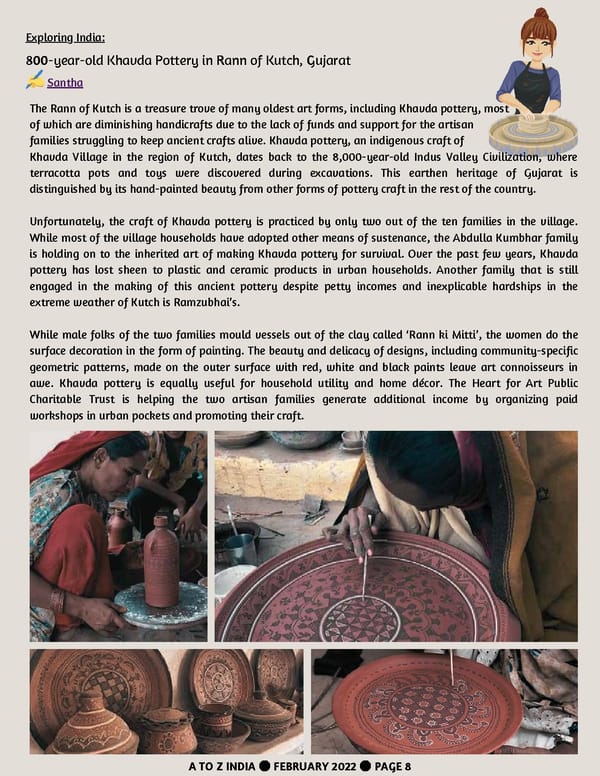Exploring India: 800-year-old Khavda Pottery in Rann of Kutch, Gujarat Santha The Rann of Kutch is a treasure trove of many oldest art forms, including Khavda pottery, most of which are diminishing handicrafts due to the lack of funds and support for the artisan families struggling to keep ancient crafts alive. Khavda pottery, an indigenous craft of Khavda Village in the region of Kutch, dates back to the 8,000-year-old Indus Valley Civilization, where terracotta pots and toys were discovered during excavations. This earthen heritage of Gujarat is distinguished by its hand-painted beauty from other forms of pottery craft in the rest of the country. Unfortunately, the craft of Khavda pottery is practiced by only two out of the ten families in the village. While most of the village households have adopted other means of sustenance, the Abdulla Kumbhar family is holding on to the inherited art of making Khavda pottery for survival. Over the past few years, Khavda pottery has lost sheen to plastic and ceramic products in urban households. Another family that is still engaged in the making of this ancient pottery despite petty incomes and inexplicable hardships in the extreme weather of Kutch is Ramzubhai’s. While male folks of the two families mould vessels out of the clay called ‘Rann ki Mitti’, the women do the surface decoration in the form of painting. The beauty and delicacy of designs, including community-specific geometric patterns, made on the outer surface with red, white and black paints leave art connoisseurs in awe. Khavda pottery is equally useful for household utility and home décor. The Heart for Art Public Charitable Trust is helping the two artisan families generate additional income by organizing paid workshops in urban pockets and promoting their craft. A TO Z INDIA ● FEBRUARY 2022 ● PAGE 8
 A TO Z INDIA - FEBRUARY 2022 Page 7 Page 9
A TO Z INDIA - FEBRUARY 2022 Page 7 Page 9